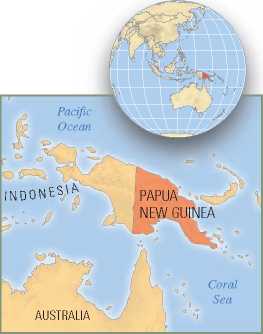Out the deeper, ultimate reasons that some individuals are likelier than others to become sick. A strictly biological approach also leaves out differences in the resources available to individuals, communities, and states to cope with disease and illness. Prion diseases provide excellent illustrations of the impact of local and global factors on the social distribution of disease.
In 1997 physician-scientist Stanley Prusiner won the Nobel Prize in medicine for his discovery of an entirely new disease agent called a prion—a protein lacking any genetic material that behaves as an infectious particle. Prions are a kind of protein that can cause the reorganization and destruction of other proteins, which may result in neurodegenerative disease as brain tissue and the nervous system are destroyed.
This discovery provided a mechanism for understanding mad cow disease, a serious problem in postindustrial societies. But knowing the biological mechanism alone is not enough to truly grasp how this disease spreads. The beef supply of several countries in Europe and North America became tainted by prions introduced through the cultural practice of grinding up sheep carcasses and adding them to the commercial feed of beef cattle. This practice began before prions were discovered, but postindustrial farmers were aware that these sheep had a condition known as scrapie; they just did not know that this condition was infectious. Through the wide distribution of tainted feed, prion disease spread from sheep to cows and then to humans who consumed tainted beef. Today countries without confirmed mad cow disease ban the importation of beef from neighboring countries with documented prion disease. Such bans have a tremendous negative impact on the local economies.
Mad cow disease is not new. This type of disease was a major concern for the Fore (pronounced “foray”) people of Papua New Guinea during the middle of the 20th century. Kuru is the name given in the local language to the prion disease that claimed the lives of great numbers of women and children in Fore communities. To deal with the devastation, the Fore welcomed assistance provided by an international team of health workers led by a physician from the United States, Carleton Gajdusek. As with mad cow disease, local and global cultural processes affected both the transmission of kuru and the measures taken to prevent its spread long before prion biology was understood.
Kuru did not fit neatly into any known biomedical categories. Because the disease seemed to be limited to families of related individuals, cultural anthropologists Shirley Lindenbaum from Australia and Robert Glasse

From the United States, who were doing fieldwork in the region, were recruited to contribute documentation of Fore kinship relationships. It was hoped this knowledge would reveal an underlying genetic mechanism for the disease.246
When kinship records did not reveal a pattern of genetic transmission, the medical team turned instead to the notion of infectious disease, even though the slow progression of kuru seemed to weigh against an infectious cause. Material derived from infected individuals was injected into chimpanzees (see Chapter 3 for a discussion of the ethics of this practice) to see whether they developed the disease. After 18 months, injected chimpanzees succumbed to the classic symptoms of kuru, and their autopsied brains indicated the same pathologies as seen in humans with kuru. At this point, the disease was defined as infectious (garnering Gajdusek a Nobel Prize). Because prions had not yet been discovered, scientists defined this infectious agent as an unidentified “slow virus.”
Scientists knew that kuru is infectious, but they still did not understand why some individuals were infected but not others. For the explanation, a wider anthropological perspective is required, as Lindenbaum explains in her book Kuru Sorcery. Lindenbaum demonstrates that kuru is related to cultural practices regarding the bodies of individuals who have died from kuru and the way global factors impacted local practices.
Culturally, Fore women are responsible for preparing the bodies of their loved ones for the afterlife. This practice alone put women at a greater risk for exposure to kuru. Lindenbaum also discovered that women and children were at risk due to a combination of these local practices with global economic forces. In Fore society, men were responsible for raising pigs and slaughtering and distributing meat. The middle of the 20th century was a time of hardship and transition for the Fore people. Colonial rule by Australia had changed the fabric of society, threatening traditional subsistence patterns and resulting in a shortage of protein in the form of pigs. The limited amount of pig meat available was distributed by men preferentially to other men.
Fore women told Lindenbaum that, as a practical solution to their hunger, they consumed their own dead.
Fore women preferred eating their loved ones who had died in a relatively “meaty” state from kuru compared to eating individuals wasted away from malnutrition. This temporary practice was abandoned as the Fore subsistence pattern recovered, and the Fore learned of the biological mechanisms of kuru transmission.
The Fore medical system had its own explanations for the causes of kuru, primarily involving sorcery, that were compatible with biomedical explanations for the mechanisms of disease. Such blending of medical systems is common throughout the globe today.
Medical pluralism refers to the presence of multiple medical systems, each with its own practices and beliefs in a society. As illustrated with the Fore, individuals generally can reconcile conflicting medical systems and incorporate diverse elements from a variety of systems to ease their suffering. While Western biomedicine has contributed some spectacular treatments and cures for a variety of diseases, many of its practices and values are singularly associated with the Euramerican societies in which they developed. The international public health movement attempts to bring many of the successes of biomedicine based on the scientific understanding of human biology to the rest of the world. But to do so successfully, local cultural practices and beliefs must be taken into account.
Both mad cow disease and kuru illustrate that no sickness in the 21st century can be considered in isolation; an understanding of these diseases must take into account political and economic influences as well as how these forces affect the ability to treat or cure.




 World History
World History









